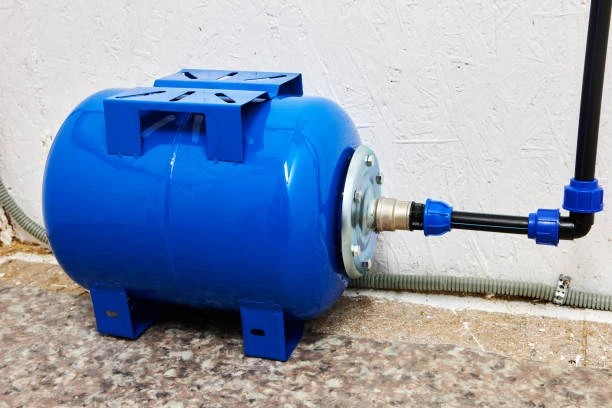In Oregon, the rehabilitation of aging infrastructure is a pressing concern for municipalities striving to maintain effective stormwater management systems. One recent project involved the use of High-Density Polyethylene HDPE pipe to slipline and rehabilitate a deteriorating Corrugated Metal Pipe (CMP) culvert. This innovative approach not only enhances the structural integrity of the culvert but also exemplifies the advantages of HDPE Pipe in infrastructure projects. Central to this rehabilitation were pipe press fittings, which played a vital role in ensuring reliable connections and efficient installation.

Understanding the Need for Rehabilitation
Culverts are essential components of stormwater management systems, facilitating the flow of water under roads, railways, and other barriers. However, many older CMP culverts suffer from issues such as corrosion, blockages, and structural failure. The deterioration of these culverts can lead to flooding, road damage, and environmental degradation.
Challenges Faced by CMP Culverts
- Corrosion: CMPs are prone to rust and deterioration over time, particularly in areas with high moisture levels or corrosive soil conditions.
- Debris Accumulation: The corrugated surface can trap debris, leading to blockages that reduce water flow and increase the risk of flooding.
- Limited Lifespan: Traditional CMPs often have a shorter lifespan compared to modern materials, necessitating frequent repairs or replacements.
The Solution: HDPE Sliplining
To address these challenges, the Oregon project employed HDPE sliplining as a rehabilitation method. This technique involves inserting a new HDPE pipe into the existing CMP, effectively creating a new conduit without the need for extensive excavation. Here’s why HDPE is an ideal choice for sliplining:
Advantages of HDPE Pipes
- Corrosion Resistance: HDPE pipes are highly resistant to corrosion and chemicals, making them suitable for use in a variety of environments, including those prone to moisture.
- Durability: HDPE pipes have a lifespan that often exceeds 50 years, reducing the need for frequent maintenance and replacements.
- Lightweight and Flexible: The lightweight nature of HDPE makes it easier to handle and install, especially in constrained spaces like culverts.
- Smooth Interior Surface: The smooth surface of HDPE pipes reduces friction, allowing for better flow rates and minimizing the risk of debris buildup.
- Environmental Benefits: HDPE is a recyclable material, contributing to sustainability efforts in infrastructure projects.
Installation Process
The sliplining process for the CMP culvert in Oregon involved several key steps:
- Inspection and Assessment: Before rehabilitation, the existing CMP was inspected to assess its condition and determine the appropriate size of the HDPE pipe needed for sliplining.
- Cleaning and Preparation: Any debris and obstructions within the CMP were cleared to ensure a smooth installation of the HDPE lining.
- Insertion of HDPE Pipe: The HDPE pipe was inserted into the existing culvert using specialized equipment, allowing for a quick and efficient installation.
- Securing Connections: Pipe press fittings were utilized to create secure, leak-proof connections between sections of HDPE pipe, ensuring the integrity of the system.
HDPE pipe The Role of Pipe Press Fittings
Pipe press fittings are crucial in the success of any piping system, particularly in sliplining projects. Here’s how they contribute:
- Quick and Efficient Connections: Pipe press fittings allow for rapid assembly of HDPE pipes, minimizing installation time and reducing project costs.
- Strong Seals: These fittings provide robust, leak-proof connections that can withstand high pressures, ensuring the integrity of the culvert system.
- Versatility: Pipe press fittings can accommodate various pipe sizes and configurations, making them suitable for diverse applications in infrastructure projects.
HDPE pipe Benefits of HDPE Rehabilitation
The sliplining of the CMP culvert using HDPE pipes offers numerous benefits:
- Improved Water Flow: The smooth interior of HDPE pipes enhances flow rates, reducing the likelihood of blockages and mitigating flooding risks.
- Long Lifespan: With an expected lifespan of over 50 years, the new HDPE system will require minimal maintenance, providing long-term cost savings.
- Cost-Effectiveness: While the initial investment in HDPE pipes may be higher than repairing the CMP, the long-term savings from reduced maintenance .
- Environmental Sustainability: Using recyclable HDPE materials aligns with sustainability goals, minimizing environmental impact while upgrading critical infrastructure.
Overcoming Challenges in Rehabilitation Projects
While the benefits of sliplining with HDPE are clear, challenges can arise in the execution of such projects. Here are some common issues and potential solutions:
- Installation Expertise: The successful implementation of sliplining requires trained personnel. Investing in training programs can enhance installation efficiency and reduce errors.
- Material Compatibility: Ensuring compatibility between existing structures and new materials is crucial. Conducting thorough inspections can help identify potential issues before installation.
- Cost Considerations: Initial costs may be higher for HDPE materials, but the long-term savings from reduced maintenance .
Conclusion
The use of HDPE pipes to rehabilitate the CMP culvert in Oregon demonstrates an innovative . By utilizing sliplining techniques and incorporating pipe press fittings, the project enhances stormwater management capabilities while promoting sustainability. This case serves as a model for other municipalities facing similar issues and highlights the critical role of modern materials in infrastructure rehabilitation.
HDPE pipe Frequently Asked Questions (FAQ)
- What is sliplining?
- Sliplining is a trenchless rehabilitation method that involves inserting a new pipe into an existing one.
- Why are HDPE pipes used for sliplining?
- HDPE pipes are corrosion-resistant, durable, lightweight, and have a smooth interior surface, making them ideal for sliplining applications.
- What are pipe press fittings?
- Pipe press fittings are connectors that join pipes quickly and securely without the need for welding, providing reliable, leak-proof connections.
- How does sliplining improve culvert performance?
- Sliplining enhances culvert performance by improving water flow, reducing the risk of blockages, and extending the lifespan of the infrastructure.
- What are the environmental benefits of using HDPE pipes?
- HDPE pipes are recyclable and contribute to sustainable infrastructure development, minimizing environmental impact compared to traditional materials.














![PE Pipe Market Size, Share, Trend [2024-2032] Forecast Report PE Pipe Market](https://pipefittingblog.com/wp-content/uploads/2024/10/8cdda3b4892b4617b9072c650cb5ee0d.webp)



